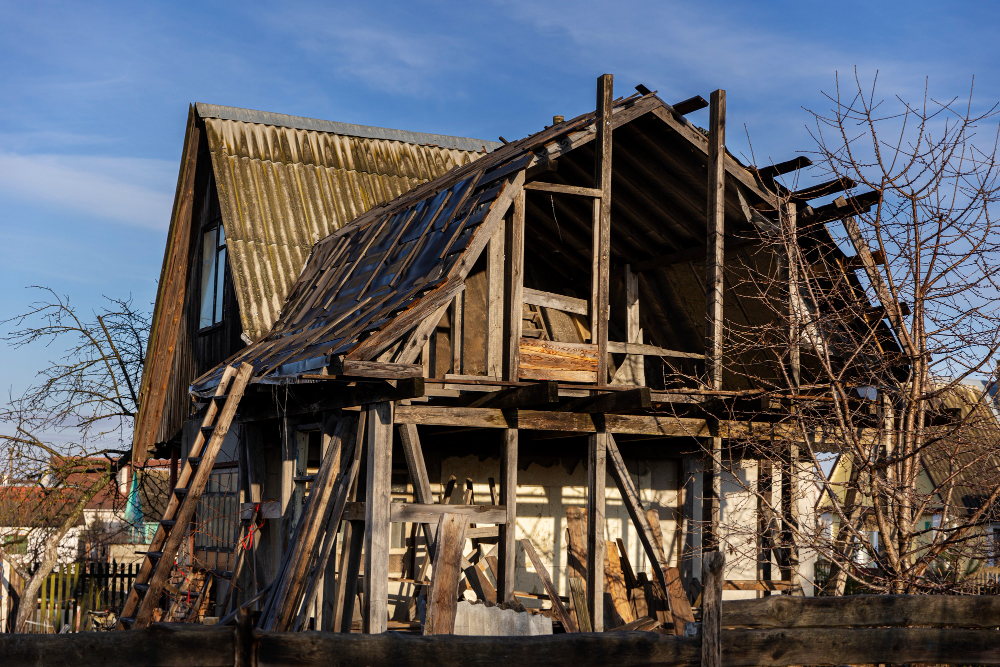Remodeling an abandoned house can be an exciting and rewarding project, but it’s also one that requires time, effort, and attention to detail. Whether you’re looking to flip the house for profit or create your dream home from a neglected property, the process involves several key steps. From securing permits to tackling structural issues, remodeling an abandoned house can be a monumental task. However, with careful planning and the right approach, it’s entirely possible to transform a forgotten structure into something beautiful and functional.
Here’s a step-by-step guide to help you navigate the process of remodeling an abandoned house.
1. Assess the Condition of the Property
Before you start tearing down walls or picking out paint colors, it’s crucial to thoroughly assess the condition of the property. Abandoned houses often come with hidden problems like water damage, mold, or even structural issues that can compromise the entire project. You’ll want to hire a professional inspector who specializes in abandoned or distressed properties to conduct a thorough inspection.
Some key things to look for include:
- Foundation and Structure: Check for cracks or signs of settling that could indicate significant issues with the foundation or framing.
- Roof Condition: Look for leaks, missing shingles, or areas that may require replacement.
- Electrical and Plumbing Systems: Check the age and condition of electrical wiring and plumbing. Outdated systems could need to be entirely replaced.
- Pest Infestations: Abandoned houses are prone to infestations of rodents, insects, or even larger pests. This needs to be addressed immediately.
- Mold or Water Damage: If the house has been exposed to the elements for an extended period, it may have water damage or mold growth, which could be costly to remediate.
Once you have a clear picture of the condition, you can decide what repairs or renovations are necessary. Be prepared for the possibility that you’ll need to make some major changes, especially if the house has been abandoned for a long time.
2. Create a Budget and Plan Your Remodel
Remodeling an abandoned house can quickly get expensive, especially if unexpected issues arise. That’s why creating a comprehensive budget and timeline is crucial for managing costs and staying on track.
Start by estimating the costs for each phase of the remodel, including:
- Demolition and Removal: Depending on the state of the house, you may need to remove old flooring, broken appliances, debris, or even entire sections of walls.
- Structural Repairs: If you’re dealing with foundation issues or roof repairs, these can get expensive. Make sure to allocate enough of your budget for these critical fixes.
- Systems Upgrades: Electrical, plumbing, and HVAC systems may need to be updated to meet modern standards.
- Cosmetic Changes: Once the essential structural work is done, you can budget for things like new floors, paint, cabinetry, fixtures, and appliances.
Include a contingency fund in your budget for unexpected expenses, as it’s common for hidden issues to arise once work begins.
Additionally, make a timeline that includes milestones for each phase of the remodel. Depending on the scope of your project, the timeline could range from several months to over a year, especially if structural issues are involved.
3. Obtain Necessary Permits and Legal Approvals
Remodeling an abandoned house is a major undertaking, and before you start any work, you’ll need to make sure you have all the proper permits and approvals from your local government. This is especially important if you’re making significant changes to the structure, electrical systems, or plumbing.
Check with your local building department to find out what permits are required for your project. Common permits include:
- Building Permits: For major structural changes, including walls, foundation repairs, or roof replacements.
- Electrical and Plumbing Permits: For any work that involves updating or changing electrical wiring or plumbing systems.
- Demolition Permits: If you’re tearing down parts of the house, especially load-bearing walls or entire structures.
- Zoning Approvals: Make sure that the property is zoned for residential use and that any changes you plan to make comply with local zoning laws.
It’s essential to have these permits in place before you begin work, as failure to do so could result in fines or having to undo completed work.
4. Start with Structural Repairs and Safety Issues
The first stage of your remodel should focus on addressing any structural repairs and safety issues. This is the foundation of the entire project, and it’s crucial to get these right before moving forward with cosmetic updates.
Begin by reinforcing the foundation if necessary. This may involve pouring a new slab or adding supports to ensure the house is structurally sound. Next, tackle the roof—repair any leaks or replace damaged shingles to prevent further water damage.
Once the roof is secure, move on to any foundational or load-bearing wall repairs. If you’re dealing with significant damage to the frame or foundation, hire a structural engineer to assess the situation and make recommendations.
If there are any safety concerns—such as exposed wires, unstable flooring, or hazardous materials like asbestos—address these immediately to ensure the safety of yourself and anyone working on the project.
5. Update Electrical, Plumbing, and HVAC Systems
After the structural work is complete, it’s time to update the systems that make the house functional. Electrical, plumbing, and HVAC systems in abandoned houses are often outdated and may not meet modern codes. This is where you’ll need to invest heavily to ensure the home is safe and comfortable.
- Electrical Systems: Rewiring the house may be necessary, especially if the current wiring is outdated or damaged. You’ll need to hire a licensed electrician to upgrade the system and ensure it meets local codes.
- Plumbing Systems: Old pipes, especially in abandoned houses, are prone to leaks and corrosion. Replace damaged pipes and fixtures, and upgrade to modern systems that will provide consistent water pressure and avoid potential leaks.
- HVAC Systems: Depending on the state of the existing heating and cooling systems, you may need to install a new furnace, air conditioning unit, or ductwork.
These system updates are critical to ensuring that the house is livable and functional. They may also be required to pass inspections before you can move on to cosmetic updates.
6. Focus on Cosmetic Renovations
With the structural and safety issues addressed, it’s time to focus on making the house look and feel like a home. Cosmetic renovations include:
- Flooring: Replace worn-out carpet or damaged hardwood with new flooring.
- Paint and Wallpaper: Freshen up the walls with a coat of paint or replace old wallpaper with modern designs.
- Kitchen and Bathrooms: Install new countertops, cabinets, and appliances in the kitchen. Upgrade bathrooms with new fixtures, tiling, and vanities.
- Lighting and Fixtures: Replace outdated light fixtures and install new ones that match the style of your remodel.
At this stage, you can let your design vision come to life and transform the abandoned house into a beautiful, modern home.
7. Final Touches and Inspection
Once all the major work is done, it’s time to put on the finishing touches. This includes landscaping, adding decorative elements, and doing a final inspection to ensure everything is up to code.
Schedule a professional inspection to verify that all systems are functioning correctly, and obtain any final permits or approvals from the local authorities. Then, you’ll be ready to move into your newly remodeled home or prepare it for sale.
Conclusion
Remodeling an abandoned house is a huge undertaking, but with careful planning, the right expertise, and plenty of patience, it’s possible to transform a neglected property into something beautiful. By following these steps—assessing the property, creating a budget, obtaining permits, addressing structural and system issues, and focusing on cosmetic upgrades—you can bring new life to an abandoned house and create a stunning, functional living space.
Whether you’re renovating for yourself or as part of a real estate investment, the end result is worth the effort.

